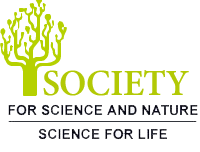ETHICAL AND MALPRACTICE STATEMENT
Ethical Responsibilities of Authors Submitting their Manuscripts to
Bioscience Biotechnology Research Communications
Authors submitting their work to Bioscience Biotechnology Research Communications should refrain from misrepresenting research, using unethical means, and engaging in other malpractices that could damage the journal’s trust, the professionalism of scientific authorship, and ultimately the entire scientific endeavour.
The publication of quality research must be bound by ethics, honesty, and the stakeholders’ trust.
Maintaining the integrity of research and its presentation is helped by following the rules of good scientific practice, which are as follows:
- The manuscript should not be submitted to more than one publication for simultaneous consideration. A certificate to this effect in the ethical declaration/ form must be submitted with the MS by the corresponding author, duly signed by all authors.
- The submitted work should be original and should not have been published elsewhere in any form or language (partially or in full), unless the new work concerns an expansion of previous work.
- Please provide transparency on the re-use of material to avoid the concerns about text-recycling (‘self-plagiarism’).
- A single study should not be split up into several parts to increase the quantity of submissions and submitted to various publications or to one journal over time.
- Results should be presented clearly, honestly, and without fabrication, falsification, or inappropriate data manipulation (including image-based manipulation).
- Authors should adhere to discipline-specific rules for acquiring, selecting, and processing data.
- No data, text, or theories by others are presented as if they were the author’s own (‘plagiarism’).
- Proper acknowledgements with citations and references to other research work must be given (this includes material that is closely copied (near verbatim), summarized, and/or paraphrased), quotation marks (to indicate words taken from another source) are used for verbatim copying of material, and permissions secured for material that is copyrighted.
- Important note: The journal uses software to screen for plagiarism; authors must attach certificates of plagiarism level check of their submitted MS using Ithenticate /Turnitin.
- Authors should make sure they have permissions for the use of software, questionnaires/(web) surveys, and scales in their studies (if appropriate).
Research articles, data-based reviews, and non-research articles (Opinions, Perspectives, and Commentaries) must cite appropriate and relevant literature in support of the claims made. Excessive and inappropriate self-citation or coordinated efforts among several authors to collectively self-cite are strongly discouraged.
Adding and/or deleting authors during the revision stages is generally not permitted, but in some cases may be warranted. Reasons for changes in authorship should be explained in detail. Please note that changes to authorship cannot be made after acceptance of a manuscript.
Data Availability, Retention, and Sharing:
Upon request, authors should be prepared to send relevant documentation or data in order to verify the validity of the results presented. This could be in the form of raw data, samples, records, etc. Sensitive information in the form of confidential or proprietary data is excluded.
Fraudulent Data and Malpractices:
If there is suspicion of misbehaviour or alleged fraud /publication of earlier work, plagiarism of any kind, the Journal and /or Publisher will carry out an investigation following standard international guidelines.
If, after investigation, there are valid concerns, the author (s) concerned will be contacted under their given e-mail address and allowed to address the issue. Depending on the situation, this may result in the Journal’s and /or Publisher’s implementation of the following measures, including, but not limited to:
If the manuscript is still under consideration, it may be rejected and returned to the author. If the article has already been published online, depending on the nature and severity of the infraction, an erratum/correction may be placed with the article, an editorial expression of concern may be placed with the article, or in severe cases, retraction of the article may occur.
Please note that retraction means that the article may be maintained on the platform, watermarked “retracted,” and the explanation for the retraction is provided in a note linked to the watermarked article or completely removed from all sources.
The author’s institution may be informed. A notice of suspected transgression of ethical standards in the peer review system may be included as part of the author’s and article’s bibliographic record.
Suggesting Reviewers
Authors (Corresponding Author) are /is welcome to suggest suitable reviewers when they submit their manuscripts, in the cover letter. When suggesting reviewers, authors should make sure they are totally independent and not connected to the researchers in any way. It is strongly recommended to suggest a mix of reviewers from different regions/countries and different institutions.
When suggesting reviewers, the Corresponding Author must provide an email address for each suggested reviewer. Please note that the journal may not use the author’s suggested reviewers, but suggestions are appreciated and may help facilitate the peer review process.
